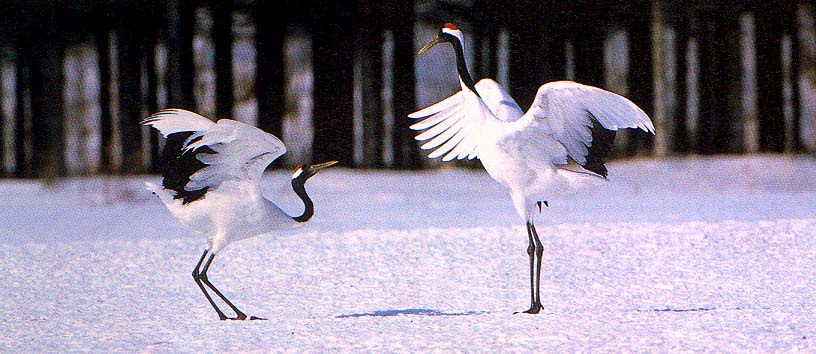Red-Crowned Crane
(Tancho Tsuru)
| Physical description:
|
| Special anatomical, physiological The red-crowned crane is named for the red "cap" on top of its head, whch is exposed red skin. The crane's large size help it resist many different predators. It can also outrun the predators with its speed. The bill of the red-crowned crane is very pointed and sharp, the crane uses it like a spear. The shape of its bill makes it easier to gather food. The crane uses very elaborate dances for courting
and other cummunication between each other. This dance consists of series
of bows, head bobbing, leaps, and various other gestures. They also
have a "unison call" between the male and the female before getting
into other dance elements.
|
| Personal Observations: The red-crowned cranes at the zoo walk proudly and gracfully. They are peaceful and serene animals. But, they are curious, and if you were to stand at their cage for a period of time they will stretch their long necks and come to you to see what you are about. |
Source Materials and Related Links: |
Page author: |
